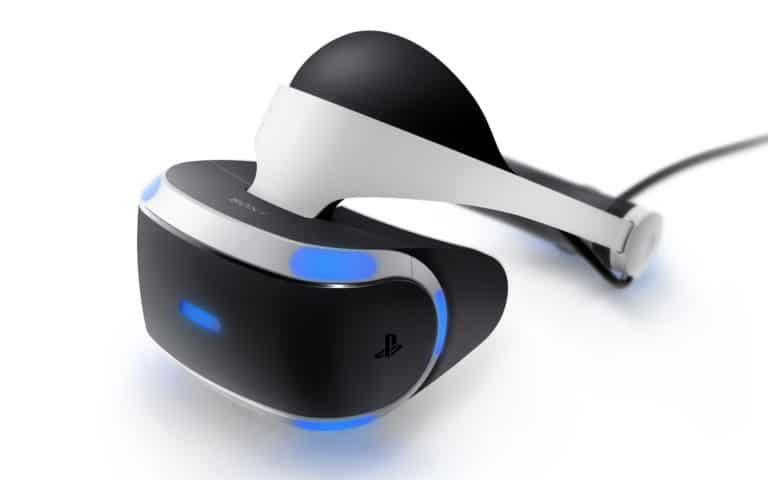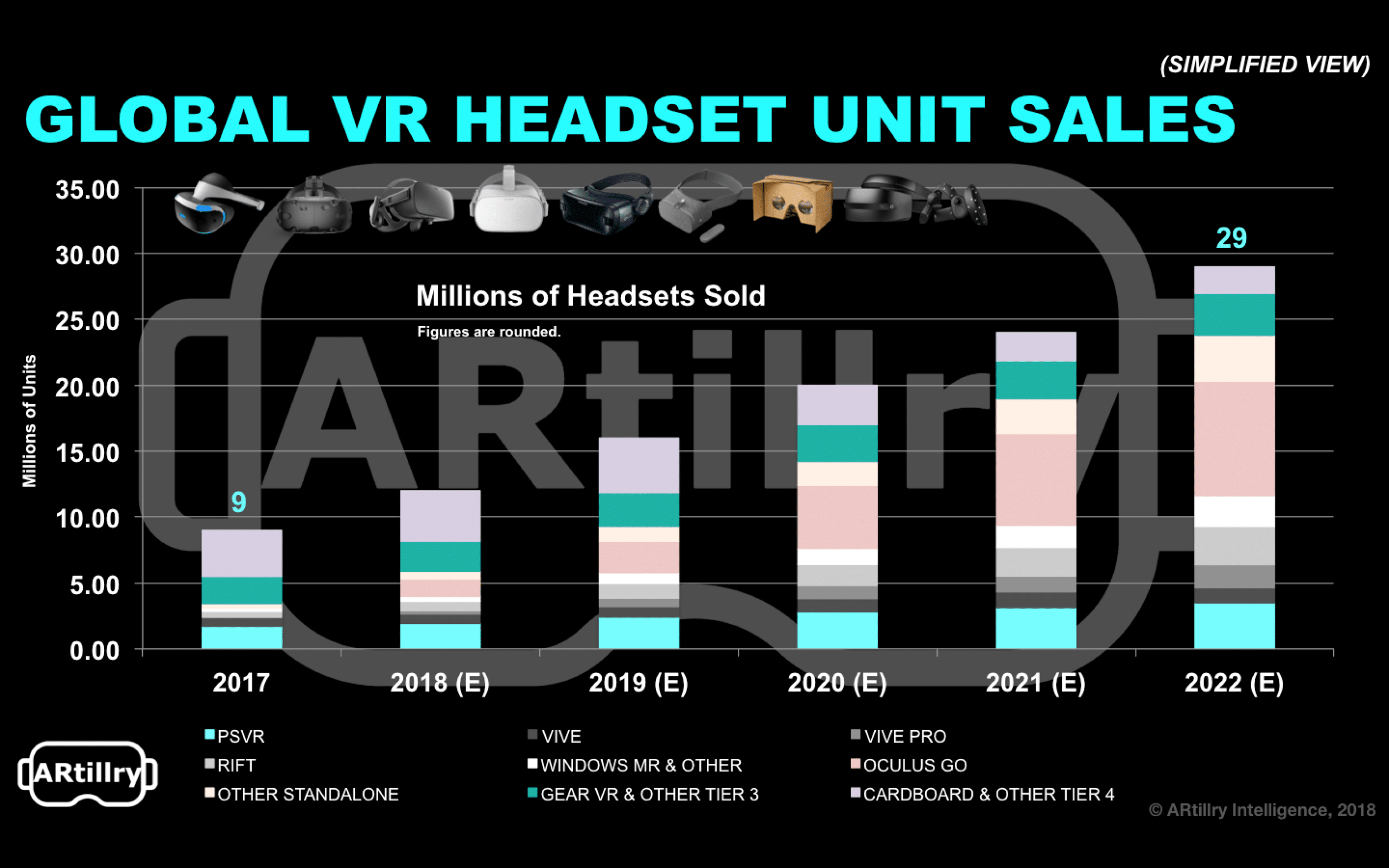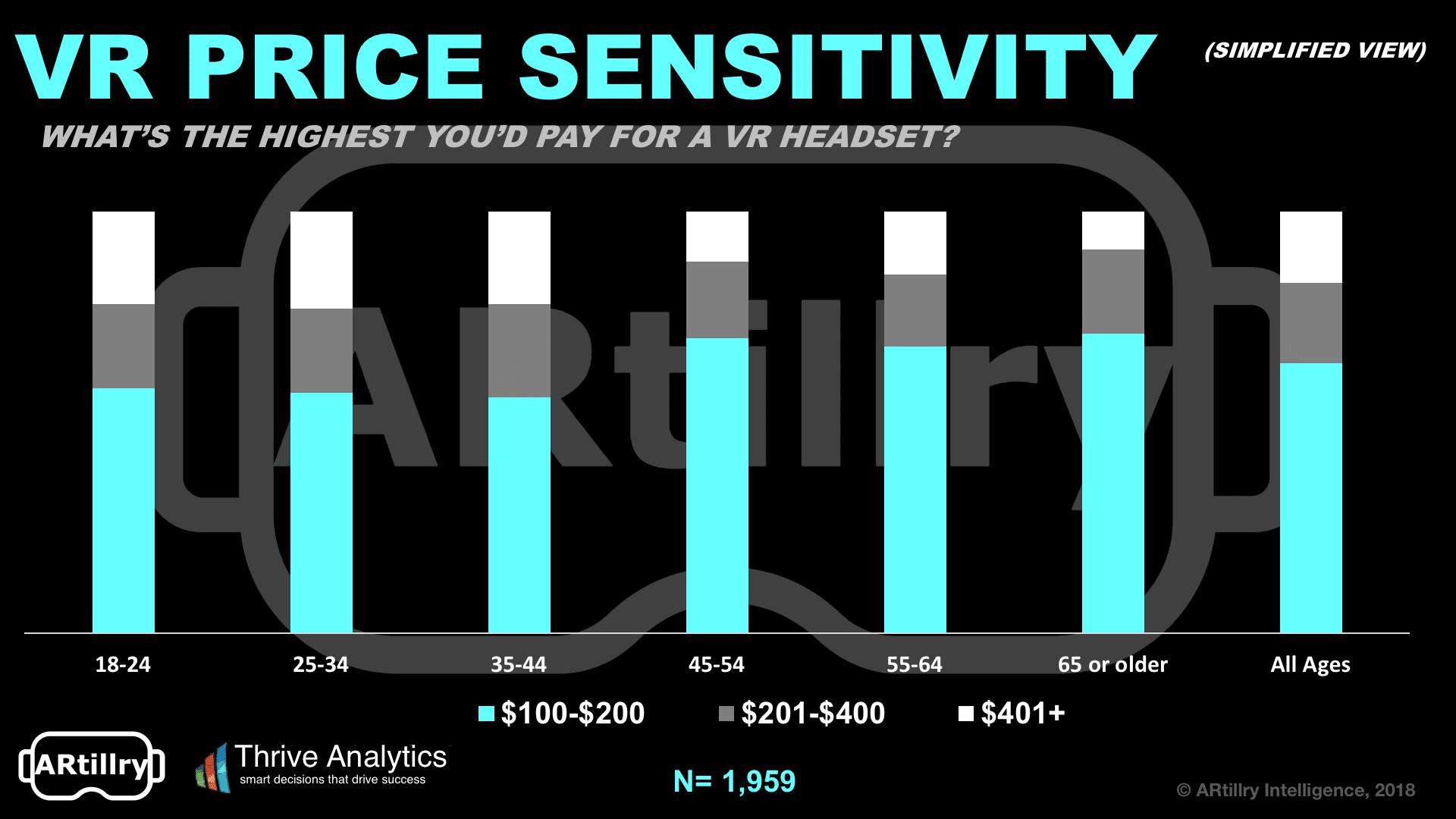
Data Point of the Week is ARtillry’s weekly dive into data from around the XR universe. Spanning usage and market-sizing data, it’s meant to draw insights for XR players, or would-be entrants. To see an indexed archive of data briefs and slide bank, subscribe to ARtillry Pro.
Last week, we got a data point that represents a rare nugget in the VR world: a unit sales disclosure from a major hardware player. Sony announced that it has sold three million PSVRs to date. It also announced it has sold 80 million PSVRs — a key enabler and growth driver for PSVR.
This makes PSVR the leading headset among tier-1 VR (Vive, Rift & PSVR) and second leading headset overall, behind Gear VR. As we noted last week, Gear VR sales growth has slowed over the past year as the promos and giveaways that previously drove its lead have receded.
Meanwhile, PSVR’s three million units aligns with our market projections which pegs the headset’s installed base at 3.6 million units at the end of 2018 (see below). We project it to continue to lead tier-1 through 2022, but Rift will start to gain share in later years (more on that in a bit).

As noted, PSVR’s growth has been driven by all those compatible PS4 units in market. This gives it an addressable market that its tier-1 counterparts don’t enjoy. So the all-in cost for a PSVR owner is around $299 if she already owns a PS4. Rift and Vive “all-in” price is greater than $1K.
Price elasticity is a major gating factor to VR adoption at this early stage, as it often is for products that are new, non-essential and pricey. There are very few ubiquitous products that are greater than $400: Car, fridge, TV, smartphone, etc. VR isn’t on that list and probably will never be.
Instead, VR’s scale will come when the price dips below a certain threshold — or a price point that is “giftable,” as we like to say. And that magic price is $200 according to our consumer survey research. That price is also validated by Oculus Go’s (OG) strategic pricing.

We expect big things of OG due to that loss-leader price point that Oculus (read: Facebook) has the luxury of offering as it trades “margins for market share” to seed a market. And it’s no slouch: with solid specs and a built-in content library (another key adoption factor), it tells a good story.
Back to PSVR, we’re bullish on its continued lead in the tier-1 market, however it needs to be careful of Rift’s continued market share growth. With the same loss-leader pricing that drives OG, Rift could aggressively compete on price in the tier-1 space. It’s already begun doing so.
Meanwhile, we’ll continue to aggregate market signals to pinpoint unit sales, market shares, pricing trends and all of the other ingredients of market-sizing and forecasting. Companies disclosing unit sales is a welcome gift. The holidays came early for the XR analyst corps.
For deeper XR data and intelligence, join ARtillry PRO and subscribe to the free ARtillry Weekly newsletter.
Disclosure: ARtillry has no financial stake in the companies mentioned in this post, nor received payment for its production. Disclosure and ethics policy can be seen here.
Header image credit: Microsoft
